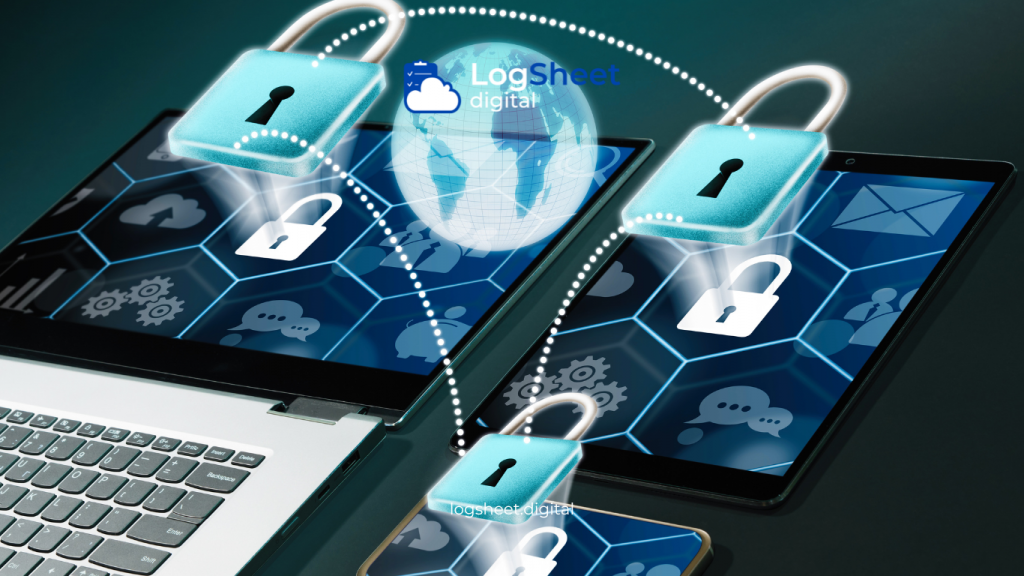As industrial technology evolves, the demand for more accurate, efficient, and integrated systems continues to rise. One crucial area that is undergoing transformation is the calibration process. Calibration plays a vital role in ensuring the accuracy of measurement instruments used across various sectors such as manufacturing, energy, healthcare, and pharmaceuticals. In efforts to create a smarter calibration process, digital logsheet emerge as an innovative solution. Digital logsheets in industry not only replace error-prone manual methods but also lay the foundation for smart calibration systems integrated into the Industry 4.0 ecosystem. This article will explore how digital logsheet pave the way for smart calibration, their benefits, challenges, and their implementation in modern industries.
Smart Calibration: Concept and Importance

Read More: Equipment Health Monitoring with Precision: Digital Logsheets in Safety
1. What is Smart Calibration?
Smart calibration refers to a technology-driven calibration system that integrates smart sensors, the Internet of Things (IoT), data analytics, and artificial intelligence (AI). The aim of such systems is to:
- Optimize measurement accuracy.
- Minimize human errors.
- Provide real-time and predictive reports on the performance of measuring instruments.
2. The Importance of Smart Calibration in Industry
Modern industries face pressure to produce high-quality products with maximum efficiency. Smart calibration helps companies:
- Maintain compliance with international standards.
- Reduce operational downtime.
- Improve the reliability of measuring instruments in the production process.
The Role of Digital Logsheets in Smart Calibration

Read More: Implementing Digital Logsheets for Safety Equipment Monitoring
Digital logsheets are the foundation for achieving smart calibration. Here are their key roles:
1. Digitization of the Calibration Process
Digital logsheets replace manual records with software-based systems. This reduces recording errors often found in traditional methods.
2. Integration with Smart Sensors
Digital logsheets can be directly linked with sensor devices, allowing data to be automatically collected without human intervention.
3. Real-Time Monitoring
Calibration data can be accessed directly through a digital dashboard, enabling the monitoring of measuring instrument conditions at any time.
4. Data Analytics
With integrated analytics features, digital logsheets help companies analyze historical data to identify failure patterns and plan preventive calibrations.
5. Automatic Reminders
Digital logsheets are equipped with automatic reminders for the next calibration schedule, ensuring measuring instruments are always in optimal condition.
Benefits of Digital Logsheets Towards Smart Calibration

Read More: Implementing Digital Logsheets in Safety Inspections
1. Improved Accuracy and Reliability
Digital systems minimize human errors, which are often the leading cause of inaccuracies in manual calibration processes.
2. Time and Cost Efficiency
By automating the data recording and analysis process, the time needed for calibration is significantly reduced, leading to operational cost savings.
3. Better Data Traceability
Calibration data is securely stored in the digital system, making it easy to access for audits or performance evaluations.
4. Preparedness for Industry 4.0
Digital logsheets prepare companies to integrate advanced technologies like IoT and AI into their calibration systems.
Implementing Digital Logsheets in Various Industries

Read More: Digital Logsheets as a Key Factor in the Transformation Towards Logistics 4.0
1. Manufacturing
In the manufacturing industry, digital logsheets help maintain production quality by ensuring that measurement instruments remain accurate and meet standards.
2. Pharmaceuticals
Calibration processes in pharmaceutical laboratories are crucial as they directly affect product safety and effectiveness. Digital logsheets ensure precise documentation that is easily accessible for regulatory audits.
3. Energy
In power plants, digital logsheets are used to monitor measurement instruments operating in extreme environments, ensuring operational reliability and safety.
4. Healthcare
Medical equipment requires regular calibration to maintain diagnostic accuracy. Digital logsheets simplify the management of calibration schedules for healthcare devices.
Challenges in Implementing Digital Logsheets

Read More: Implementing Digital Logsheets in Logistics Equipment Maintenance Management
1. High Initial Costs
The initial investment in hardware and software for digital logsheets can be a barrier for small and medium-sized companies.
2. Resistance to Change
The transition from manual systems to digital ones requires adaptation, which may not always be well received by employees.
3. Limited Technology Infrastructure
Some companies may face challenges in terms of IT infrastructure that may not be adequate to support digital logsheets.
4. Data Security
As a digital-based system, the risk of data breaches is a major concern that must be addressed with robust security measures.
Steps to Implement Digital Logsheets

Read More: Enhancing Industry Safety with Digital Logsheets on Safety Equipment
1. Evaluate Needs
Identify the specific calibration needs of the company to select the right digital logsheet solution.
2. Choose the Right Platform
Select a digital logsheet provider that offers features tailored to your needs, such as IoT integration, data analytics, and high-level security.
3. User Training
Provide intensive training to technicians to ensure they understand how the digital logsheet system works.
4. Gradual Integration
Begin implementation in one area or division before expanding across the company.
5. Maintenance and Evaluation
Monitor the system’s performance regularly and conduct evaluations to ensure its effectiveness.
Case Studies: Success Stories with Digital Logsheets

Read More: Data Security in Digital Logsheets: Strategies and Challenges
1. Automotive Industry
An automotive factory uses digital logsheets to monitor measurement instruments during the assembly process. As a result:
- Measurement errors decreased by 30%.
- Time efficiency increased by 25%.
- The speed of internal audits improved thanks to better data traceability.
2. Semiconductor Factory
A semiconductor factory implemented digital logsheets to manage thousands of measurement devices. Within two years:
- Operational costs decreased by 20%.
- The reliability of audit data improved, supporting international certifications.
Conclusion

Read More: Effectiveness of Digital Logsheets in Reducing Defects and Repetitions in Calibration
Digital logsheets are an innovation that not only replace manual methods but also form the foundation for smart calibration. With features like automatic data logging, sensor integration, and data analytics, digital logsheets help companies improve the accuracy, efficiency, and reliability of their calibration processes.
Although implementation challenges remain, the long-term benefits far outweigh them, particularly in the context of Industry 4.0. With proper planning, digital logsheets can become an integral part of digital transformation, preparing industries for a more advanced and integrated future.






comments (0)